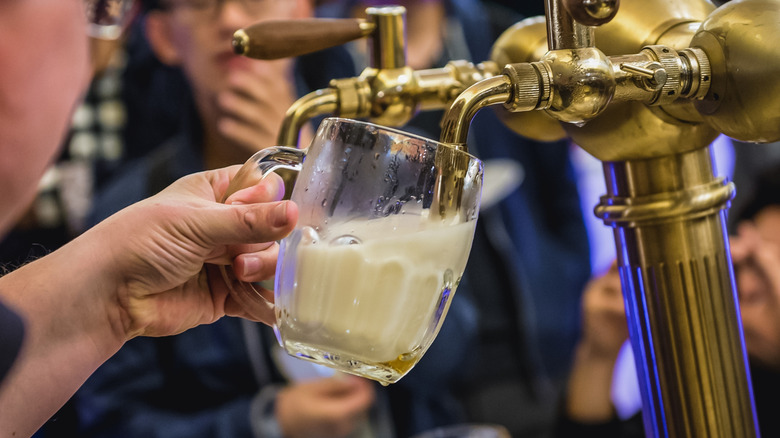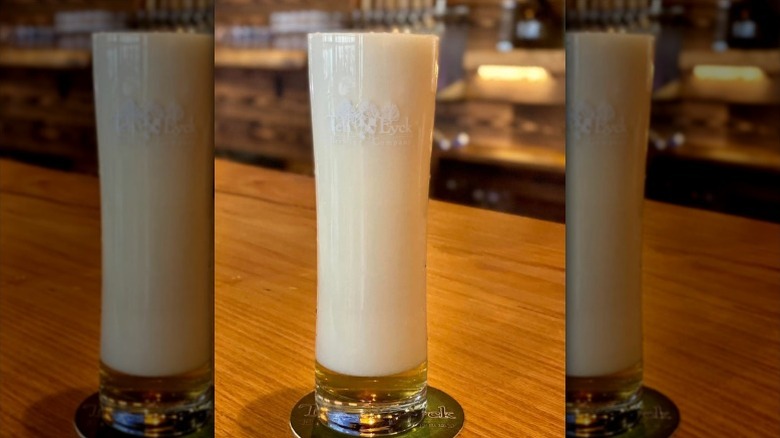Why Is Czech Mlíko Beer So Darn Foamy?
One trend that some American bars and breweries have been embracing in recent years seems to fly in the face of conventional beer wisdom. Many drinkers may associate a glass full of foam with cheap beer that's been badly poured — and in fact, the American idea of how much head a beer should have tends to be pretty minimalist. The Czech-style mlíko pour, however, instead embraces foam to the extent that nearly the entire beer is head.
Mlíko, which is the Czech word for milk, resembles its eponymous beverage in that the entire glass is full of creamy white stuff with only a hint of golden lager on the bottom. What makes the mlíko pour possible these days isn't a specific beer style so much as it is a type of tap.
The Czech-made LUKR side-pull faucet lets the bartender control the amount of foam in the beer. If the tap is opened very slowly, it allows the foam to build to the point where it can almost fill up the glass. Poured this way, the beer is said to taste sweeter and less bitter than it would without such a head. LUKR taps were invented in 1991 but weren't sold in the U.S. until 2015. While they were slow to catch on at first, bars (and more importantly, bar patrons) eventually learned to know and love drinking extra-foamy beers to the point where the manufacturer began moving up to 2,000 units per year.
The mlíko pour may be more popular in the U.S. than the Czech Republic
According to an ad campaign launched by Czech brewer Pilsner Urquell (an underrated beer that deserves more love) the mlíko pour is downright dessert-like. In fact, the company says it was served as a dessert drink when first introduced in the 19th century, a time when bartenders may have relied on super-slow pouring techniques to achieve the perfect head. There's surprisingly little info out there about how they achieved it in the pre-LUKR days. It also promotes the idea that the mlíko style was intended for ladies who didn't like beer, but some historians are skeptical.
As Prague-based beer writer Evan Rail told The New York Times, he suspects mlíko may have started as a joke between Czech bartenders competing to see who could pour the most foam (or perhaps, convince customers to drink it). Another theory is that it allows Pilsner Urquell to sell several different varieties of the same beer since there are less foamy (and more popular) pours such as the hladinka, which is about ¼ foam, and the šnyt, which is about ⅔ foam.
Despite their Czech origins, mlíko pours may actually be more popular in the U.S. than in their native land. The majority of Czech beer drinkers don't order them and may not even be familiar with the style. According to one Redditor from the Czech Republic, most Czechs had forgotten the mlíko until Pilsner Urquell revived it for marketing purposes. They also say it's not meant for sipping, but instead for chugging between more standard pours like the hladinka. The idea is to drink the full frothy serving in one go.

